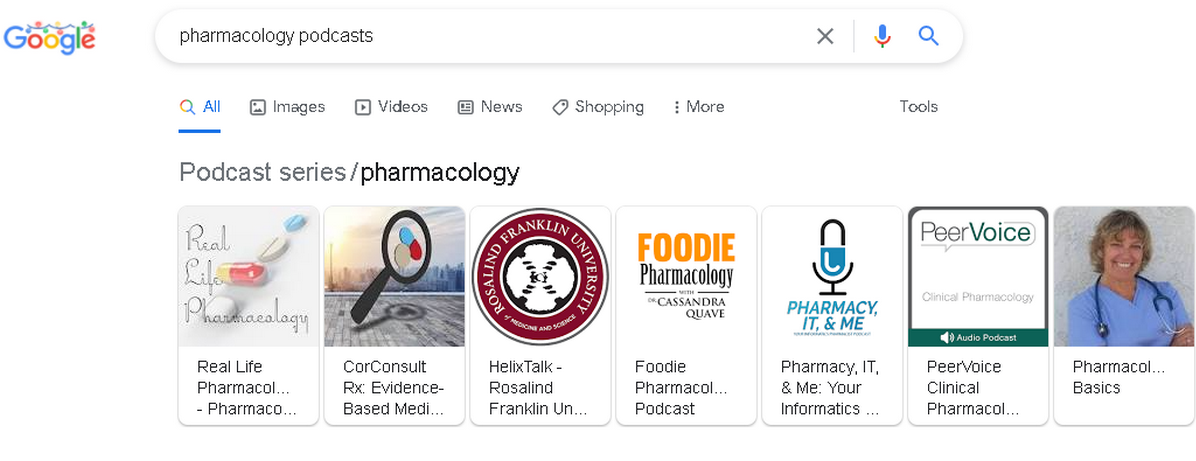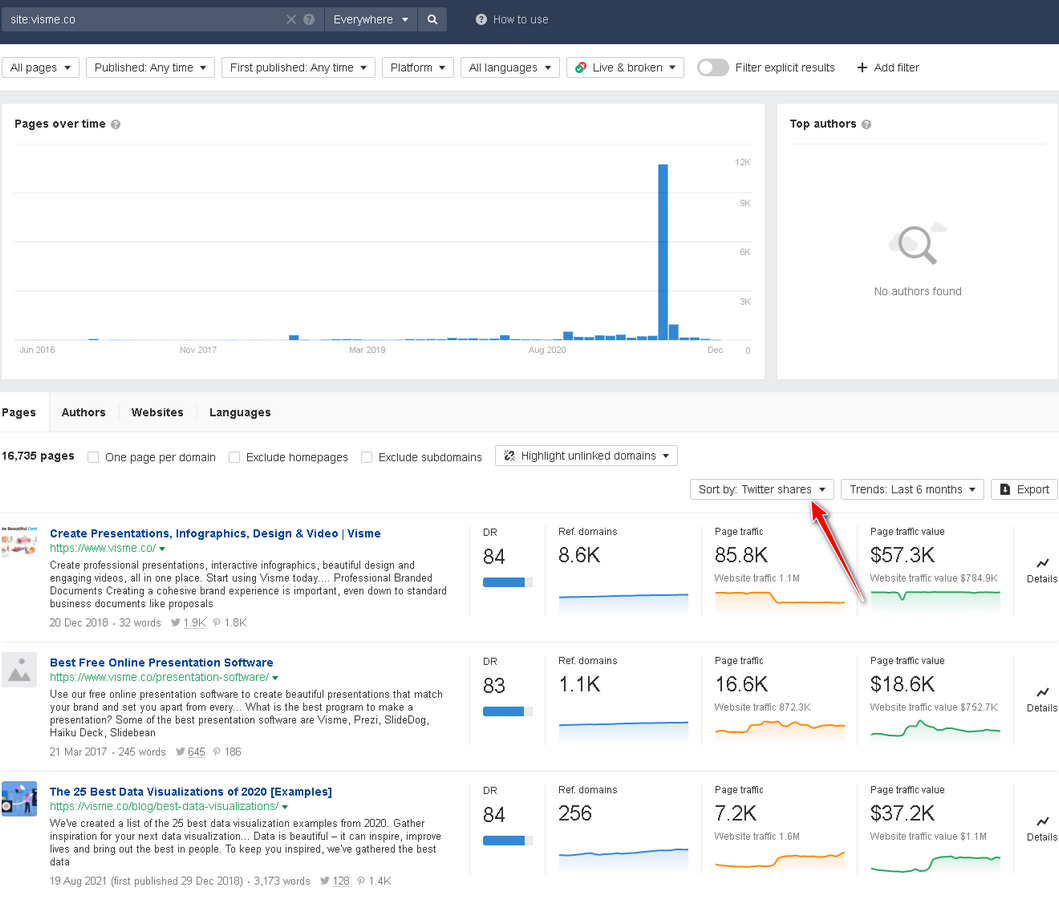
For many businesses, content marketing is the foundation of a successful overall marketing strategy. If you know how to speak to your target audience, offer education about their problems, and position your service or product as a solution, you’ll be a winner and outshine the competition in your niche, every time.
But your content marketing won’t bring the right results if you use outdated techniques—so it’s imperative to be up-to-date with the latest trends in the content marketing world.
If you’re looking for those trends in 2022, you’ve come to the right place. Here are ten content marketing tactics you can use to drive success for your business this year.
1. Try out guest posting.
Okay, we’ll admit guest posting is an old-fashioned tactic. But practice shows that it hasn’t lost its effectiveness. And marketers contribute across third-party resources regularly.
Keep in mind that effective guest posting is not about publishing as many posts in as many places as you can. It’s about creating guest articles that cover the topic better (as in ten times better) than top-ranking search engine results.
What are the benefits of writing a “10X” guest article?
- It gives you exposure. If you cover a popular topic from a different angle, suggesting new tips and tricks, your audience will share it more willingly.
- You know that links work as one of the signals that Google takes into account. Hence, a 10X guest article has more chances to acquire links than a mediocre piece of content.
- If your guest post ranks in the search engine result page (SERP) for your target keyword, it may drive traffic and leads to your business.
Not sure how to find guest post opportunities? One of the most straightforward ways is by searching with Google or another search engine for “[niche] + write for us”. These results will help you find third-party sites that may be open to accepting and publishing your work.

Browse the results and choose a few sites you feel are the best fit for your business and audience. Think about what topics offer the most value and demonstrate your expertise to readers. For example, if you run an accounting firm and work with a lot of startups and entrepreneurs, you may want to write guest articles about saving on taxes or attracting investors and publish those articles on sites that offer resources for the small business community.
2. Repurpose your content.
Content doesn’t need to be static. Consider ways it can evolve and be repurposed. Have a great blog post? Turn it into an equally great video for social media!
This not only helps you reach a wider audience, but get more value out of your content (after all, it can take a long time to create!). Again, start with your audience’s needs in mind. Research what formats your customers or clients like to consume.
Afterwards, repurpose existing content—perhaps you can turn a long-form guide into a short series and create an Instagram post. Or turn a white paper that drives tons of traffic into a course that your audience will receive via email during a few days. Shoot a video, create an infographic, put together a product demo—the possibilities are endless!
3. Incorporate user-generated content into your content marketing strategy
According to marketing software company Stackla, 79% of users believe user-generated content has a direct impact on purchasing decisions. That’s a clear indication that this tactic can support your content marketing strategy.
A few tips for incorporating user-generated content effectively:
- Don’t shy away from sharing success stories with your leads.
- Post users’ photos on your social channels.
- Share success stories with the audience.
- Publish product or company reviews on your site.
Here’s an example of how the team at Visme leveraged user-generated content to highlight a customer story:

4. Try webinars and podcasts.
Increasingly, the best content marketing has interactive elements, such as polls and quizzes, that actively engage audiences rather than having them passively consume the content.
One of the most impactful forms of interactive content are webinars. Webinar software makes it easy to invite guest speakers or co-hosts to boost your webinar attendance.
Along with webinars, podcasts give you an opportunity to speak to a huge audience who might comprise numerous potential customers. This is a great strategy in the COVID-19 era, when there are few chances to talk to people live on stage in a shared physical setting.
Finding potential podcasts to guest on is easy. Use a search engine to search for “[your niche] + podcasts“. Then, explore the ones you like and reach out to their hosts.

5. Create checklists.
Content marketing often takes the form of a “how-to” guide that outlines a detailed process—but that’s only a portion of what an effective piece of content can do. Give readers an action plan and help them take the next steps by providing checklists.
Here’s a quick tip to figure out what checklists will help your audience: Use Ahrefs’ Keywords Explorer tool. Type the “seed” keywords related to your niche and pay attention to the “Matching terms” report.
For example, if you were selling content design tools, your “seed” keywords might be “infographic” and “presentation”. Those might reveal such keywords as “tool,” “maker,” and “software.” Add these words to the “Include” filters and apply the “Any word” option:

From there, explore the results and reap the benefits.
6. Create a newsletter that entices subscribers.
Many marketers have a love/hate relationship with email. We want to reach our audience where they’re active but we don’t want to bother them especially with annoying, boring, or irrelevant content. It’s not just rude but may lead to subscribers tuning out and unsubscribing.
The best newsletters offer subscribers interesting—and personalized—content. You can provide that kind of experience by putting time into creating (or curating) the content and using the right email marketing software to segment your email subscribers based on their behavior and background.
7. Create comparison pages.
A comparison page illustrates how your product or service, well, compares to your main competitors’. Landing pages and blog posts are great places to cover this topic.
Here’s an example of a comparison blog post Visme put together.

While they aren’t the right fit for every business and industry, comparison pages can be quite valuable. If people explore them, it means they intend to make a purchase, which helps you understand and qualify your leads, so you can focus on driving them toward learning about the benefits of your business and making an informed decision.
Not sure who your competitors are? Open that search engine and search for “[your brand/product/service] alternatives.” Here’s a look at ours:

8. Teach people how to do something—and then show them it’s easier for you to do it.
Google suggests tons of information. You can find a detailed guide on practically anything you want, and apply that information to make it happen.
But is that really worth your time?
For example, you can find a step-by-step guide on how to make an infographic. But the truth is that most people would rather hire a professional designer to make it or try to find an easy-to-use tool that makes it simple.
9. Create an email course to attract new leads.
Another perfect way to boost your content marketing strategy and acquire new leads is to create a free email course. This course should have only one goal—to educate your target audience.
For a good example, check out AWeber’s email course, “Everyday Email,” which explores the ways on how to power up your email marketing.

This course takes 30 days, taking a minute of your time per day, and it’s great for beginners. You’ll need to sign up to get the course completed, and you’ll get a downloadable guide at the end of the course with all 30 tips included.
Consider replicating this approach by creating a course related to your business. You can send educational emails during a period of a few days or weeks, sharing some useful theoretical and practical information with people by creating an evergreen webinar.
10. Create a buzz on Twitter with a Tweetstorm.
Your content marketing strategy should go hand-in-hand with your activity on social media, and Twitter’s a perfect example of how this can work. Consider sharing a fresh piece of content with your community in a new way by, for instance, posting a Tweetstorm.
Tweetstorms aren’t hard to create. Start by brainstorming what you want to say to your followers and what value your content generates, then break your ideas into pieces and tweet them away!
One benefit of tweetstorms is that they may create a buzz and bring more followers and potential customers.
One way to create a tweetstorm that would resonate with your audience, is by using the Content Explorer tool in Ahrefs. Type the command “site:domain.com” and sort the results by the “Twitter shares”.

Skim through the results and repurpose the main key takeaways into your future tweetstorms.
In conclusion…
Content marketing strategies never stop evolving, and there’s no shortage of ideas for businesses to try. Keep an open mind and stay on top of new trends, but don’t lose sight of the tried-and-true tactics that still work.
Most of all, don’t be afraid to try things and put your business out there. The only way to truly optimize your content marketing strategy is to experiment, test, gain experience, and hone your approach over time. You might not achieve the results you want immediately, but you’ll get there before long.
Just don’t let fear of short-term failure hold you back from long-term success. To paraphrase Wayne Gretzky (or was it Michael Scott?), you miss 100% of the content marketing opportunities you don’t take.



